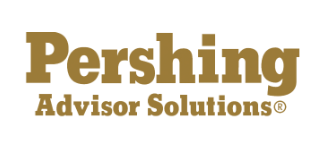Financial Advisor IQ – Let Clients Talk – and Be Surprised What You Learn
October 2016
October 7, 2016
This time we hear from Bobby Feldman, a Pittsburgh, Pa.-based partner and financial advisor with Snowden Lane Partners, an independent wealth advisory firm with offices across the country. He describes how much he’s learned about clients by letting them do the talking.
You know you’ve had a great meeting with a prospect or a client when they’ve talked 95% of the time. Some advisors think they need to prove their worth through words, but people like to talk about themselves – our clients included. When you let the client take the floor you also end up learning important things about them that can give you a good head start in building the relationship.
A few years ago a longtime client referred her neighbor to me as a prospect. This woman had recently quit her academic job to focus full-time on a book she wanted to write. She had about $1.5 million in a decedent IRA that her father had left her.
One strategy I’ve found for getting clients to open up is to meet with them on their own turf. My firm’s office is in downtown Pittsburgh but I hardly ever have people meet me at the office, in part because it’s so inconvenient to get downtown. It’s almost always better to meet them in their home or, barring that, a restaurant. It starts the relationship off on a warm footing.
In this case, I met the prospect and her boyfriend for lunch. I asked them a question I often pose to new clients: What are the two or three things that you really want to accomplish in the years to come, and that you are truly committed to making happen? Not only is this a way to get prospects to open up about their goals, it’s also a great strategy for spurring them to talk in an open-ended way.
That conversation at lunch turned out to be eye-opening for this woman. Her boyfriend’s dream was to travel the world on his boat; her dream was to finish her book. As the conversation continued over lunch I learned that she had tried to live on a sailboat with him the previous summer and hadn’t been able to get much work on her book accomplished. Clearly, there were some issues there.
The next time I met with this woman, who by then had become a client, we sat on her back porch. Again, I let her do most of the talking. Again, I learned more important information about her that ended up being crucial to helping me develop a financial plan for her. This time she opened up about her twenty-something son, who lived in New Jersey and was essentially homeless. She was concerned about finding a way to provide for him that didn’t also enable him to engage in harmful behavior. I also brought up her comment from the previous meeting, about her desire to write her book and how it didn’t necessarily jibe with her boyfriend’s goals. That inspired another long tangent in the conversation.
Another advisor might have seen these meetings as a waste of time, or as a form of small-talk that didn’t have much to do with the planning process. Ultimately, though, the opposite was true. Those long conversations where I listened to her built trust – something that’s crucial in the advisor-client relationship.
They also gave me insight into issues that have important financial consequences to her. In the end, my client opted not to spend the summer on the boat with her boyfriend and instead stayed at home to work on her book. She also started a support group for parents in a situation similar to hers, and invited me to speak to the group.
Listening is not about just sitting quietly. It’s actually a very engaged process — clients can tell if you’re just smiling and nodding but are actually daydreaming about something else. You have to really pay attention and notice the important things your clients are telling you.
You have to follow up, too — like when I checked in with this client about her book project. That way clients know you’re not just hearing them, you’re truly listening.
You know you’ve had a great meeting with a prospect or a client when they’ve talked 95% of the time. Some advisors think they need to prove their worth through words, but people like to talk about themselves – our clients included. When you let the client take the floor you also end up learning important things about them that can give you a good head start in building the relationship.
A few years ago a longtime client referred her neighbor to me as a prospect. This woman had recently quit her academic job to focus full-time on a book she wanted to write. She had about $1.5 million in a decedent IRA that her father had left her.
One strategy I’ve found for getting clients to open up is to meet with them on their own turf. My firm’s office is in downtown Pittsburgh but I hardly ever have people meet me at the office, in part because it’s so inconvenient to get downtown. It’s almost always better to meet them in their home or, barring that, a restaurant. It starts the relationship off on a warm footing.
In this case, I met the prospect and her boyfriend for lunch. I asked them a question I often pose to new clients: What are the two or three things that you really want to accomplish in the years to come, and that you are truly committed to making happen? Not only is this a way to get prospects to open up about their goals, it’s also a great strategy for spurring them to talk in an open-ended way.
That conversation at lunch turned out to be eye-opening for this woman. Her boyfriend’s dream was to travel the world on his boat; her dream was to finish her book. As the conversation continued over lunch I learned that she had tried to live on a sailboat with him the previous summer and hadn’t been able to get much work on her book accomplished. Clearly, there were some issues there.
The next time I met with this woman, who by then had become a client, we sat on her back porch. Again, I let her do most of the talking. Again, I learned more important information about her that ended up being crucial to helping me develop a financial plan for her. This time she opened up about her twenty-something son, who lived in New Jersey and was essentially homeless. She was concerned about finding a way to provide for him that didn’t also enable him to engage in harmful behavior. I also brought up her comment from the previous meeting, about her desire to write her book and how it didn’t necessarily jibe with her boyfriend’s goals. That inspired another long tangent in the conversation.
Another advisor might have seen these meetings as a waste of time, or as a form of small-talk that didn’t have much to do with the planning process. Ultimately, though, the opposite was true. Those long conversations where I listened to her built trust – something that’s crucial in the advisor-client relationship.
They also gave me insight into issues that have important financial consequences to her. In the end, my client opted not to spend the summer on the boat with her boyfriend and instead stayed at home to work on her book. She also started a support group for parents in a situation similar to hers, and invited me to speak to the group.
Listening is not about just sitting quietly. It’s actually a very engaged process — clients can tell if you’re just smiling and nodding but are actually daydreaming about something else. You have to really pay attention and notice the important things your clients are telling you.
You have to follow up, too — like when I checked in with this client about her book project. That way clients know you’re not just hearing them, you’re truly listening.




